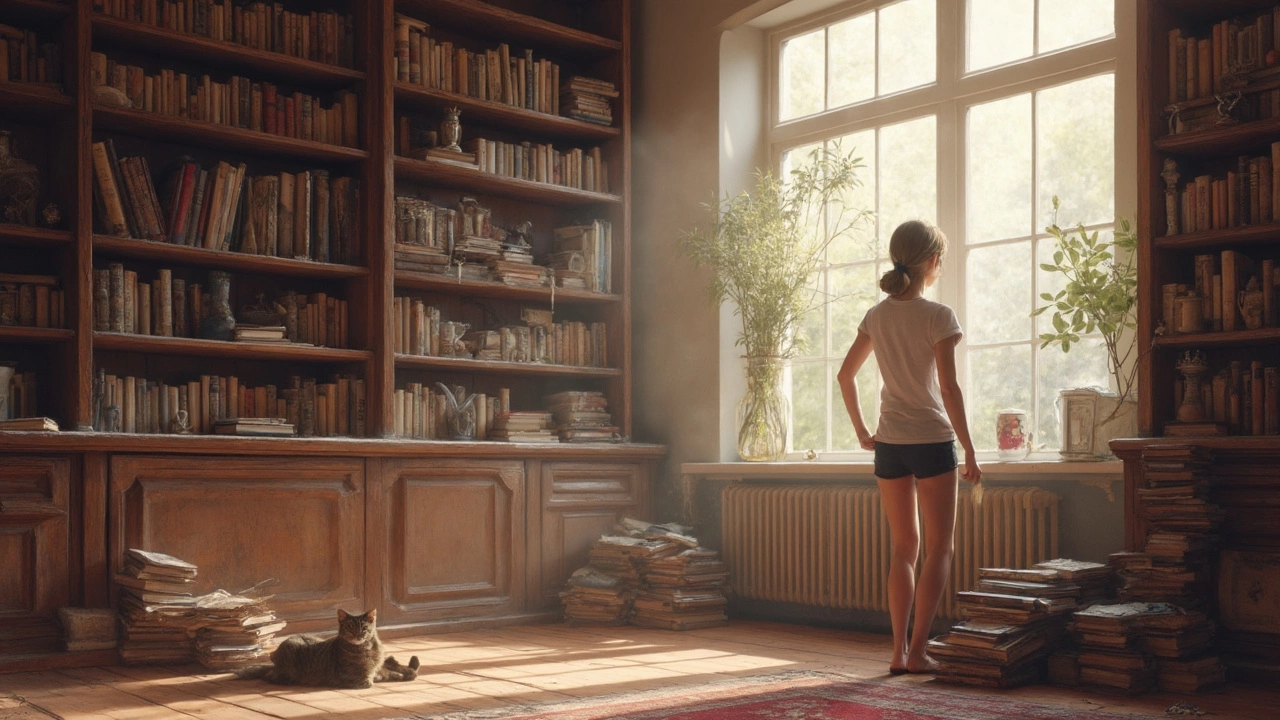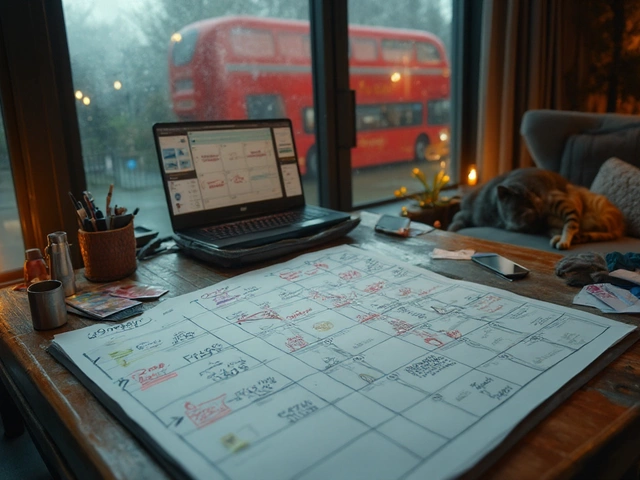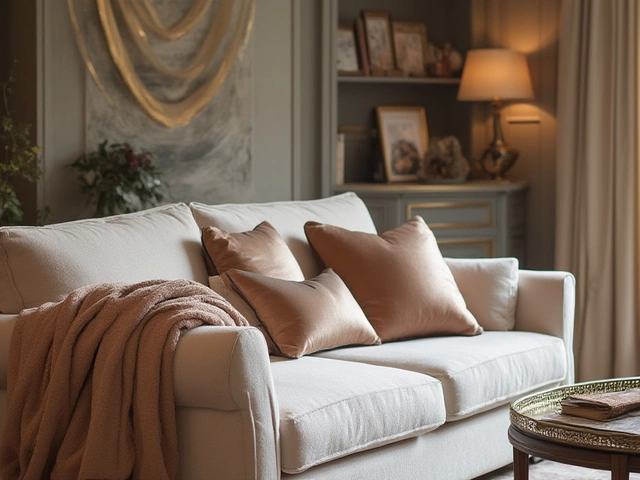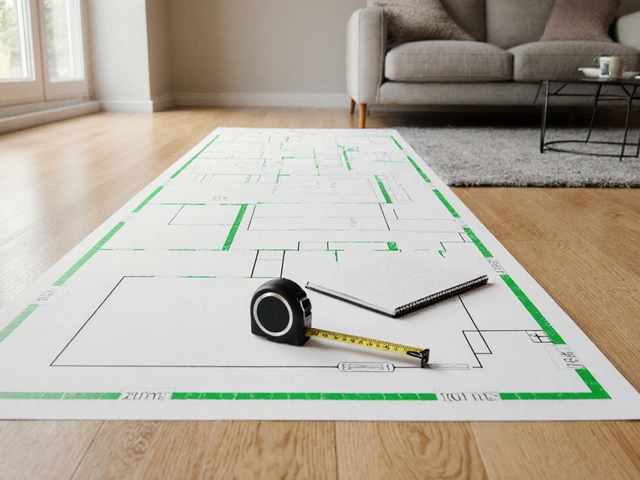Ever looked at your bookshelf and wondered if it's secretly plotting against your free time? Sure, they make a room look smart, but keeping a bookshelf tidy is like running on a hamster wheel—you never really finish. The top shelf? Always covered in dust no matter how often you dust. You find yourself stacking things where they fit, not where they belong, and suddenly those shelves feel less like a library and more like a game of Tetris.
Before adding another bookcase to your cart, it’s worth thinking about the daily grind that comes with it. These things can take over a room faster than you realize, and you don't even notice until you're squeezing sideways past a wall of wood and paper. And if you’re living in a smaller space, bookshelves don't exactly play nice with your other furniture. There are smarter and less bulky storage options out there, but nobody talks about that when you’re eyeing that picture-perfect bookshelf on social media.
- Dust and Cleaning Nightmares
- Space Hogs in Small Homes
- Hidden Safety Hazards
- Organization: More Stress Than Zen?
- Moving and Maintenance Hassles
Dust and Cleaning Nightmares
If you own bookshelves, you already know the battle with dust is real. It’s not just about wiping the shelves once in a while. Books, spines, and little nooks seem to attract dust like a magnet. According to an indoor air quality report from the EPA, bookshelves are one of the top dust collectors in the home. Why? The uneven surfaces and tightly packed books create a perfect setup for dust to settle and stay.
Cleaning a bookcase isn’t a one-swipe-and-done job. You have to remove the books to really get between and behind them. If you’re like most people, you probably only get motivated to do this when allergy season hits—or when you see a dust bunny so big it could have its own library card. Here’s the gritty part: shelves near windows or vents need cleaning even more often because airflow pushes more dust their way.
If you want to keep your storage space livable, try these tips:
- Use a microfiber cloth or electrostatic duster to lift dust instead of just moving it around.
- Start from the top shelf and work your way down, so you’re not dusting the same spots twice.
- Don’t forget the book edges and tops—these are dust magnets.
- If your bookshelves are open-backed, clean the wall behind them too.
- Consider glass doors for bookshelves. They sound fancy, but they cut down on dust big time.
Some people try to get clever with air purifiers in the room, but you still have to put in elbow grease. And if you skimp on cleaning, that dust builds up and can even trigger allergies or asthma. So when you’re shopping for new bookcases, factor in how much time you want to spend battling dust, not just arranging your books by color.
Space Hogs in Small Homes
Nothing eats up precious space faster than a big old bookshelf. If you’re living in a tiny apartment or working with a narrow room, those stylish bookshelves end up working against you. Even slim designs “made for small spaces” can stick out almost a foot from the wall, which is a big deal when every inch counts.
Here’s something people don’t think about: a standard bookshelf is about 30 inches wide and 12 inches deep. Stack two of those side by side and you’ve already lost 5 feet of valuable wall space. Got a double bed or a desk? That’s a tight game of furniture Tetris right there. Suddenly, you’re dodging corners and the room feels cramped.
Let’s be honest—most small homes just aren’t built for a wall of bookcases. You risk blocking natural light, messing up heating vents, and even losing outlets behind those shelves. Worst of all, heavy or tall bookshelves have a nasty habit of making a room look and feel smaller, no matter how neat you keep them. In fact, a survey in 2023 found that 62% of people with bookcases in small apartments wished they’d bought fewer or picked other storage, just because of how much space gets eaten up.
So, what can you actually do? Try these tips:
- Swap bulky storage for floating shelves to save floor space.
- Pick adjustable or modular units that fit your exact needs.
- Go vertical—tall, narrow bookcases make more use of ceiling height without gobbling up square footage.
- Make sure your bookshelves double up as something else—a room divider or even a desk.
If you’re working with a small home, being smart about your storage is key. Not every great book collection has to sprawl across the whole wall.

Hidden Safety Hazards
Most folks don’t worry about bookshelves causing accidents, but these things can tip, fall, or break when you least expect it. You’ve probably heard a news story or two about children pulling down a heavy bookcase. In the US alone, the Consumer Product Safety Commission reported an average of 19,400 tip-over injuries related to furniture and TVs each year—bookcases are a big part of that.
Those tall bookcases look cool until someone climbs them, or your cat decides to parkour up the shelves. If the shelf isn’t locked to the wall, it can wobble and come down hard. Even in places without kids or pets, a shaky floor or bump from vacuuming is sometimes enough to set things tipping.
| Risk Factor | Why It Matters |
|---|---|
| Not fastened to wall | Major cause of tip-overs and injuries |
| Overloading shelves | Shelves can break, books can fall on people |
| Poorly built bookcases | Flimsy joints or cheap wood leads to sudden collapse |
There are a few simple ways to make your bookshelves safer. Always use wall anchors—most kits come with them, but people skip this step. Don’t stack too many books up high; heavy stuff should go low. If your bookcase feels wobbly, wedge something under the base or move it to a more stable spot.
- Check that the bookcase is level and steady every few months.
- Don’t let anyone (pets or kids) climb on the shelves.
- Replace sagging or broken shelves right away.
Simple fixes go a long way toward making sure your trusty bookcase doesn't turn into a hazard just waiting to happen.
Organization: More Stress Than Zen?
Having a nice lineup of books on a bookshelf sounds like it should make life simpler. But let’s be honest, keeping those shelves organized often turns into something way more stressful than you expect. You start with one method—maybe alphabetical, maybe by genre—but after a month or two, you’re just jamming things anywhere after a quick glance. Family members drop random stuff on the shelves. Kids sneak toys in between the paperbacks. Suddenly, it’s chaos.
Even book-lovers get tripped up by “system overload.” Trying to stick to strict organization rules, you might waste more time sorting and reshelving than actually reading anything. A lot of people admit they reorganize their bookcases a few times a year just out of frustration. The truth? A perfectly ordered shelf is often a fantasy, especially in a busy house.
Too many bookcases make it worse. More shelves invite more stuff—and not always books. Photo frames, old receipts, mail, and random trinkets tend to pile up. If your shelf is deep enough, things just migrate to the back and disappear from sight for years. The result is clutter, not calm.
- Alphabetizing sounds simple, but how do you handle series, oversized books, or stuff that doesn’t fit upright?
- Color coding looks pretty in photos but makes finding what you want a nightmare.
- Sorting by genre or author? Great in theory, but most people don’t own enough books in one category to make neat divisions.
And here’s something practical: a recent survey from Apartment Therapy showed that over 60% of people with bookshelves regularly lose track of where specific books are. As weird as it sounds, the more shelves you have, the harder it is to keep things straight.
If you want less stress, try this: once every season, do a quick tidy-up. Pull out anything you never use. Make a rule to only keep what fits. Put other stuff in storage bins—out of sight but not lost forever. It’s not as pretty as a color-coded wall, but it’s a whole lot more relaxing—and lets your bookshelves do their job without adding to your stress.
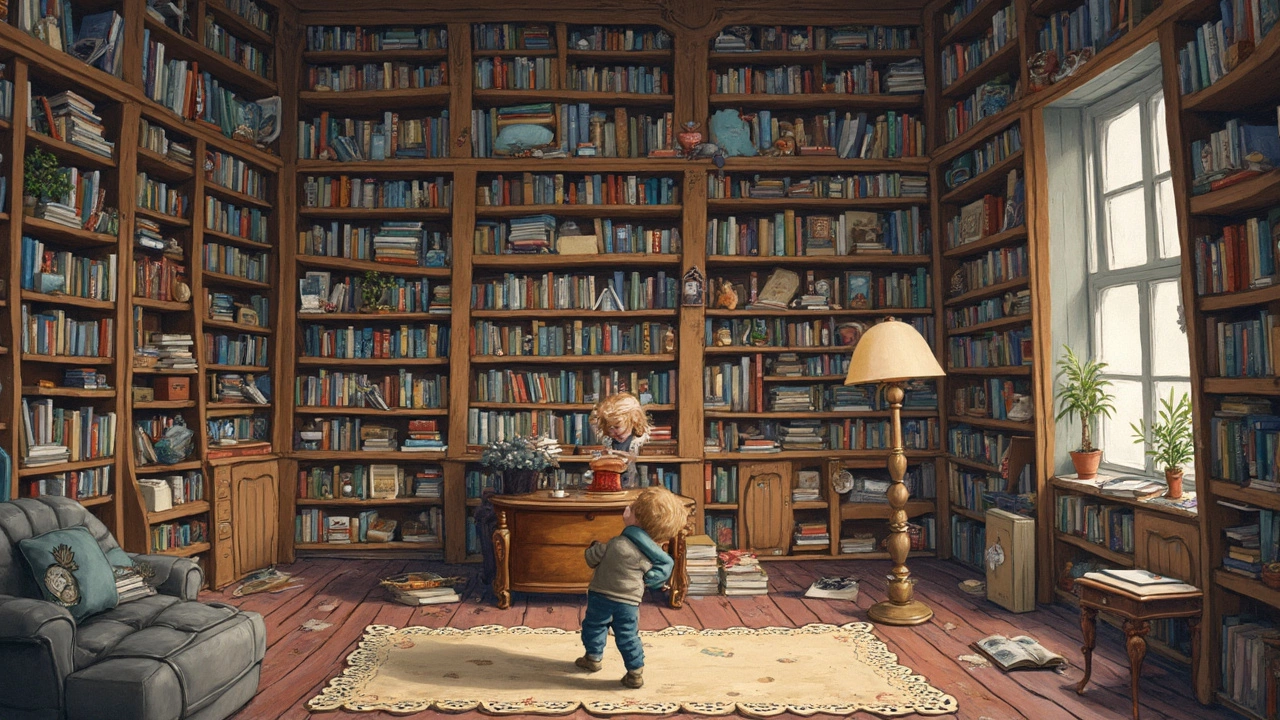
Moving and Maintenance Hassles
If you've ever tried to move a fully loaded bookshelf, you know it's basically a muscle-busting nightmare. Whether it’s just wiggling furniture around for a new look or dragging your entire setup to a new place, bookcases are among the heaviest, most awkward things in the house. Most aren’t designed to handle all that movement either—cheap units can crack or get wobbly just from a bumpy ride in the moving truck.
Some quick facts: a standard wood bookcase (about 6 feet tall) with books can weigh 100-250 pounds. And unlike tables or chairs, they’re often too tall or wide to fit through doors without taking them apart. That’s a lot of extra work just to keep your storage looking neat.
- Assembly and disassembly can be seriously tricky, especially for larger or older bookcases whose screws and bolts get stuck from years of sitting still.
- Moving them risks damage not just to the bookshelf but also to your walls, floors, and personal pride when you scratch something.
- Usually, you’ll need help or special equipment to lift and shift, which means more hassle, more calls to friends, or extra charges from movers.
Maintenance doesn’t really stop after you’ve set the shelf in place either. Sagging shelves are a real problem, especially if you love hardcovers or have a massive comic book collection. The longer bookshelves stand loaded, the more likely shelves will bow in the middle. A quick DIY tip: rotating your books or using small supports under the middle shelf helps fight the sag—but hardly anyone remembers to keep up with it.
If you’re renting, another headache is attached shelving. Some landlords demand you take down wall-mounted shelves and patch the holes before you leave. That’s more hours lost and another trip to the hardware store.
| Task | Estimated Time | Extra Cost |
|---|---|---|
| Disassembling a bookshelf | 30 mins – 2 hrs | Low (unless you lose screws!) |
| Moving with a loaded bookshelf | Impossible (empty first) | High risk of damage |
| Repairing shelf sag | 10–20 mins | $5–$20 (brackets/supports) |
So, before committing to a new shelf, weigh the future hassle costs. Opt for lighter, modular options or ones with wheels if you’re planning to move often. Your back—and your walls—will thank you.
